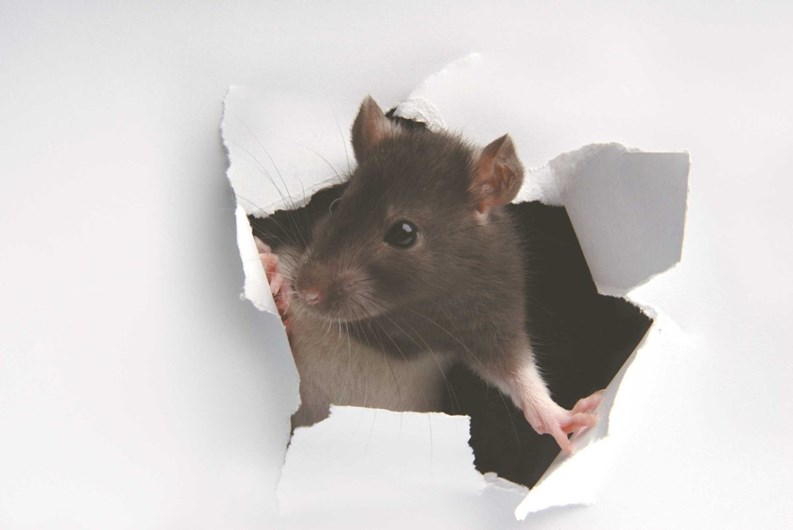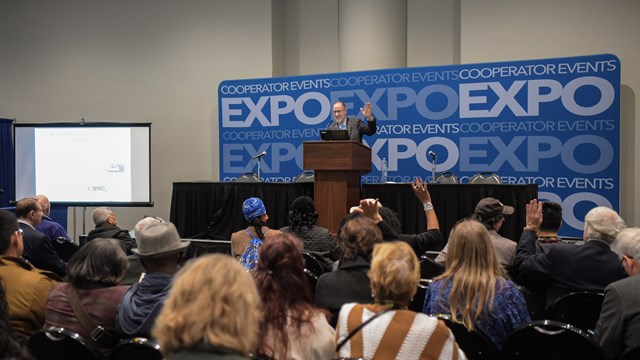New York City is not generally known for its biodiversity. Surprising pockets of nature like the Jamaica Wildlife Refuge give a glimpse of the incredible ecology that once existed in the area, but the development of a massive metropolitan area of 30 million people has take its toll on Mother Nature.
Fragile as it is however, nature can also show its stubbornness in the concrete jungles and suburban landscapes of New York. Instead of hungry predators or malaria-ridden insects, New Yorkers have their own battles with wildlife. Some enemies have been pestering locals for years, and new ones have widened the conflict.
Crawling, Flying & Creeping
The usual suspects have been living in urban environments for years: ants, rats, cockroaches, mice, waterbugs, and bedbugs are just a few of the more common offenders. These creatures have been coexisting with humans for eons, and humans have being trying to eliminate them throughout history. We haven't been doing a very good job, because all the above-mentioned pests are very much alive and well in New York City.
Human habitats have something to offer every pest, or else they wouldn't be there. For many, it's the simple safety from the elements. “Mice come inside looking for shelter, looking for food sources and to keep warm,” says Arthur Katz, president of Knockout Pest Control in Uniondale. “The buildings of New York have lots of cracks and crevices, which make it easy for the mice to go in and out. A good pest management program by any building would be to seal up those cracks and crevices to keep those mice and rodents from coming in,” he says.
Many New Yorkers consider pest issues to be virtually inevitable, and renters with irresponsible landlords have limited options if they want to take preventative pest control measures. Co-op and condo residents have a lot more leeway to make sure property managers are handling pest issues the right way. “Any good pest management program has a partnership between the tenants, the management company, and the pest management company,” says Katz. “People just think, 'I hire a pest management company and he comes and puts some products down and that's the end of my responsibility,' but that's far from the truth.”
Katz stresses that in order to truly ward off unwanted neighbors, buildings and pest control companies have to collaborate. “There needs to be cooperation between the three parties. Residents must give the management access to their space, and they don't always do that. And then you have at times lest than effective pest management companies who don't communicate to find out what the problems are to address it correctly,” he says.
Residents and property managers alike should keep prevention in mind. “In any good pest management program, the very first thing is exclusion—for example, putting doorstops in the bottoms of doors, some kind of molding so there's not a space between the door and floors so rodents can't come in, and putting screens on doors so insects aren't flying in,” says Katz.
Beasts from the East (and West, and South)
On top of the repeat offenders like mice and bed bugs, newcomers are emerging onto the local pest scene. “The thing we're dealing with mostly these days would be stink bugs,” says Bill Cowley, co-owner of Cowley Pest Control in Neptune City, New Jersey. Stink bugs originate from China, and most likely arrived in North America by way of shipping, as with most invasive species. Cowley says they've been a prevalent nuisance for the last seven years or so. They were first discovered in Allentown, PA, and “they've spread throughout most of the country at this point,” says Cowley. “They tend to be a problem a problem for farmers, or anybody that's growing fruit. For people they're really just a nuisance, or if you're a gardener then you hate them. They don't sting, they're not health a risk—they don't carry any diseases. They just show up in the fall, right around Labor Day, they start to sort of congregate in the south and west part of people's homes where it's warm from the sun, and they start to go all over, and they find themselves in the living spaces and drive people crazy,” says Cowley.
Katz says the best way to combat a stink bug infestation is the same way you would prevent a mouse or cockroach infestation—filling in cracks and holes where they might be able to crawl inside. The window for [stink bug] pest control is limited to a short period of about 10 weeks depending upon the weather. Once they're in the wallboard areas, they'll come out in the spring, and then there's not much you can do, but the best thing to do is vacuum them up,” says Katz. So far, he says, most stink bug cases he's seen have been mostly relegated to the north shore of Long Island. “I have not had too many calls from Manhattan or the boroughs yet,” he says.
Cowley says, with some luck, stink bugs could already be on the decline. “Farmers in Pennsylvania have become more aggressive in the controlling the pests in the crops, and that has minimized the insects from coming east. So because it's nature and you can't predict what's going to happen, we're waiting for the spring to see if it's more or less than last year,” he says.
But the karmic pendulum of pests continues to swing for New Yorkers. “The kudzu bug isn't here yet, but it's on its way,” says Cowley. Also known as the kudzu beetle or the bean plataspid, the insect comes from India and China, where it also acts as a pest for food crops. It was discovered in northern Georgia in 2009, and has been a scourge for farmers ever since. It especially likes to feast on soybeans. The bugs are reportedly attracted to light-colored objects such as white cars or white-colored house siding.
In just three years, the kudzu bug has migrated all the way from Georgia in to Virginia, and they have shown no signs of letting up. “We're expecting to see them up in New York at some point,” says Cowley.
As the culprits may change over the years, the pest control industry has had its share of changes as well. Twenty years ago, says Cowley, “the exterminator would show up at your house, and he would walk into your front door, he'd make a right turn and spray the baseboards in every room of your house, and leave a residual where the wall meets the floor of your house. Things are just not done that way anymore,” says Cowley.
Oh, Rats!
Perhaps the number one urban nemesis that has been around for centuries and very hard to eradicate are members of the rodent family. Common in New York City are the Norway or brown rat, thought to have originated in northern China (it has no connection to Norway) and eventually migrated to all parts of Europe and North America.
According to Nana Kojo Ayesu, owner of Kojo's Pest Elimination Company, LLC, a pest elimination company in the Bronx, rodents have lived in close proximity to humanity since the creation of mankind. They are found in almost every country and climate, except in those areas of extreme cold. Societies like China and India hold them in high regard for their versatility, intelligence and strength, while in other countries they are hunted as food.
One South Bronx development, The Diego Beekman Houses, according to Nana Kojo, had a rampant rat and mice problem that had existed since the 1970s. These so-called super rats were more than 18-inches long in some cases and terrorized the residents there for many years, he says. They ate through the building's garbage bags and found food, while others attacked cars by chewing through ignition wires, disrupting the lives of residents. People walked in the streets rather than challenge the rats for the sidewalks. He was able to successfully rid the buildings of the rodents. Kojo Ayesu said his company offers a six-month written guarantee of all work performed to rid the property of the problem species.
And brown rats aren’t the only invader. Giant Gambian pouched rats have made their way to the metropolitan area, and have even been found as far down as the Florida Keys where they escaped from a private breeder. The invasive species are the largest known breed of rat in the world.
Last year a massive brown and white Gambian pouched rat measuring three-feet in length was found dead in a Foot Locker shoe store in the Bronx, and in another instance, several of the pouched rats were found at the Marcy Houses in Brooklyn where a maintenance worker killed one with a pitchfork. Recently a pack of fifteen were seen huddled together, strolling down a Soho street in New York City shortly after Hurricane Sandy made landfall.
The Gambian pouched rat has poor eyesight and depends on its heightened sense of smell and hearing for survival. The name comes from the large hamster like pouches in its cheeks and the rodent typically weighs between two to three pounds and can grow to more than three feet long while living in colonies up to twenty.
Finding a Pest Management Solution
“Today any company that's doing things right is adhering to a very strict protocol, Integrated Pest Management,” says Katz. IPM involves “using a lot of monitoring, a lot of record keeping. Before you just start spraying things, and you have no evidence of any problems, what are you really doing?” says Katz. “It's kind of irresponsible. You're really only doing pest control when monitors tells you it's needed, because it tells you there's a problem,” he says. Katz emphasizes that nowadays responsible companies use pest control techniques judiciously rather just spraying all over the place. Cowley says, “Anyone just spraying all the floorboards today is a dinosaur.”
Kojo Ayesu said the trend these days is to take IPM a step further with an Integrated Pest Elimination System or IPES. “IPES involves extreme measures where experienced pest professionals function as small game hunters. They study rodent culture, nature, traditional habits and environment, thus guaranteeing the success of elimination. The intention of IPES is to reach zero percent rodent population,” he says. “The process is systemic and adjustable to the environment where the rodents live. Where rodent control, by definition is focused to pacify rodent problems, rodent elimination, by definition is focused to eradicate rodent problems.”
Property managers should be completely up to date on the new trends in pest control. All companies are registered with New York State, and all pest control technicians have state certification in order to work, but there are now more stringent designations that not every company has. The National Pest Management Association (NPMA) has created a program called Quality Pro, which companies can apply to. The association audits the company to ensure it complies with their standards. Companies are reviewed based on how their contracts are written, the effectiveness of their technicians, and making sure they are properly using some sort of IPM system.
“There about 17,000 pest control companies in the country, less than half of them are registered with the national association. And about 1 percent get this quality pro designation,” says Katz. In New York State, there are only about a dozen companies that also have a Quality Pro Green designation. Quality Pro Green means that the pest control company is also using the most environmentally-friendly methods—for instance using chemicals for killing termites that don't contain poisons that could be harmful to people or pets. Buildings that hire a Green Pro-certified company automatically get two points towards LEED certification, he says.
A rodent or insect infestation can be overwhelming, and feelings of hopelessness are not uncommon in such instances. Luckily, as fast as a new species from the other side of the world can take over your building, pest control methods are becoming smarter and safer.
Tom Lisi is an editorial assistant at The Cooperator. Managing Editor Debra A. Estock and staff writer Christy Smith-Sloman contributed to this article.







Leave a Comment